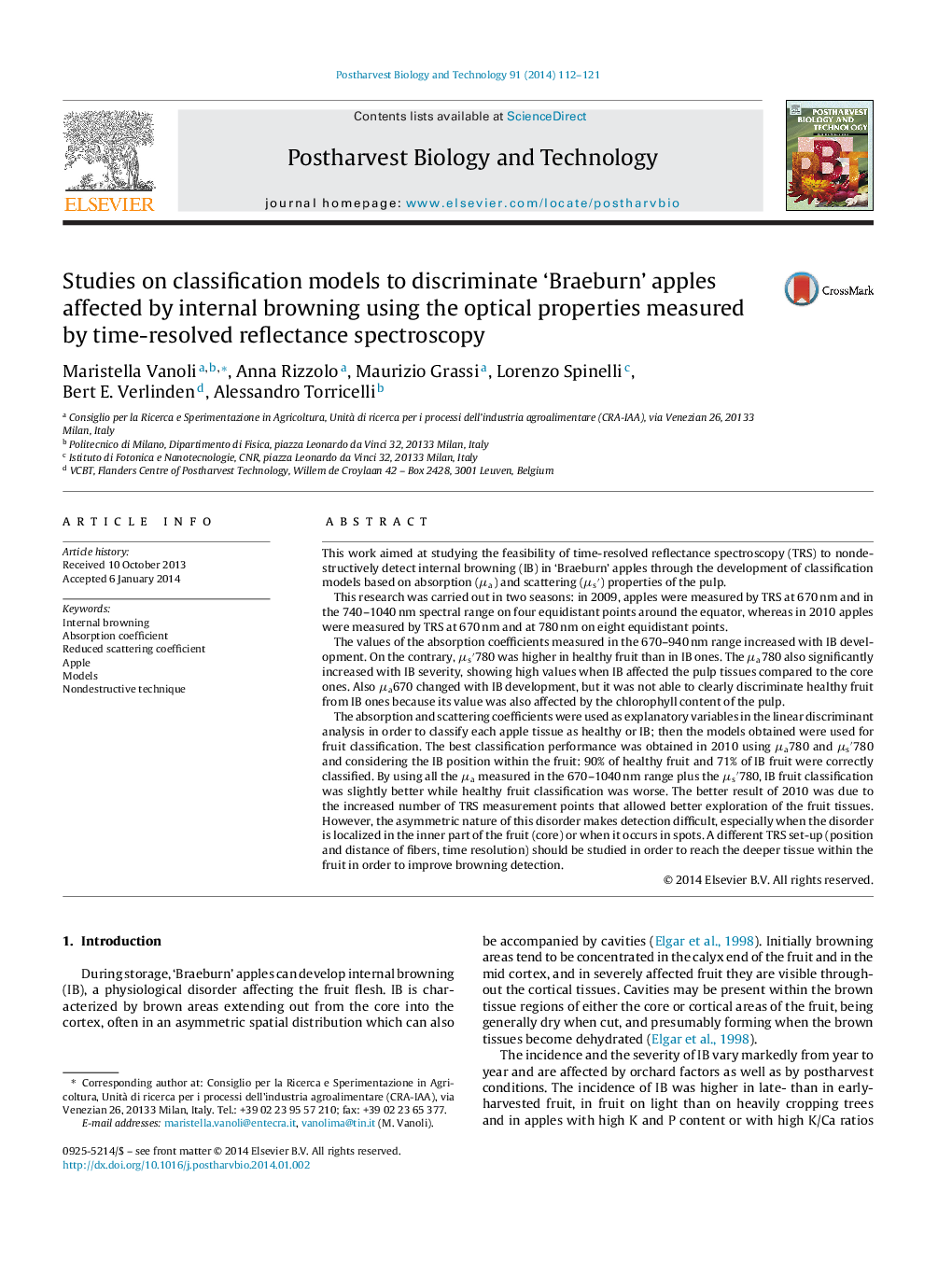| Article ID | Journal | Published Year | Pages | File Type |
|---|---|---|---|---|
| 4518200 | Postharvest Biology and Technology | 2014 | 10 Pages |
•TRS was able to nondestructively detect internal browning in intact Braeburn apples.•The μa780 increased with the presence and severity of browning.•The μs′780 showed the highest values in healthy apples.•Best classification model was based on μa780 and μs′780 and 8 measurement points.•Misclassifications were found when browning occurred in the core or in flesh spots.
This work aimed at studying the feasibility of time-resolved reflectance spectroscopy (TRS) to nondestructively detect internal browning (IB) in ‘Braeburn’ apples through the development of classification models based on absorption (μa) and scattering (μs′) properties of the pulp.This research was carried out in two seasons: in 2009, apples were measured by TRS at 670 nm and in the 740–1040 nm spectral range on four equidistant points around the equator, whereas in 2010 apples were measured by TRS at 670 nm and at 780 nm on eight equidistant points.The values of the absorption coefficients measured in the 670–940 nm range increased with IB development. On the contrary, μs′780 was higher in healthy fruit than in IB ones. The μa780 also significantly increased with IB severity, showing high values when IB affected the pulp tissues compared to the core ones. Also μa670 changed with IB development, but it was not able to clearly discriminate healthy fruit from IB ones because its value was also affected by the chlorophyll content of the pulp.The absorption and scattering coefficients were used as explanatory variables in the linear discriminant analysis in order to classify each apple tissue as healthy or IB; then the models obtained were used for fruit classification. The best classification performance was obtained in 2010 using μa780 and μs′780 and considering the IB position within the fruit: 90% of healthy fruit and 71% of IB fruit were correctly classified. By using all the μa measured in the 670–1040 nm range plus the μs′780, IB fruit classification was slightly better while healthy fruit classification was worse. The better result of 2010 was due to the increased number of TRS measurement points that allowed better exploration of the fruit tissues. However, the asymmetric nature of this disorder makes detection difficult, especially when the disorder is localized in the inner part of the fruit (core) or when it occurs in spots. A different TRS set-up (position and distance of fibers, time resolution) should be studied in order to reach the deeper tissue within the fruit in order to improve browning detection.
